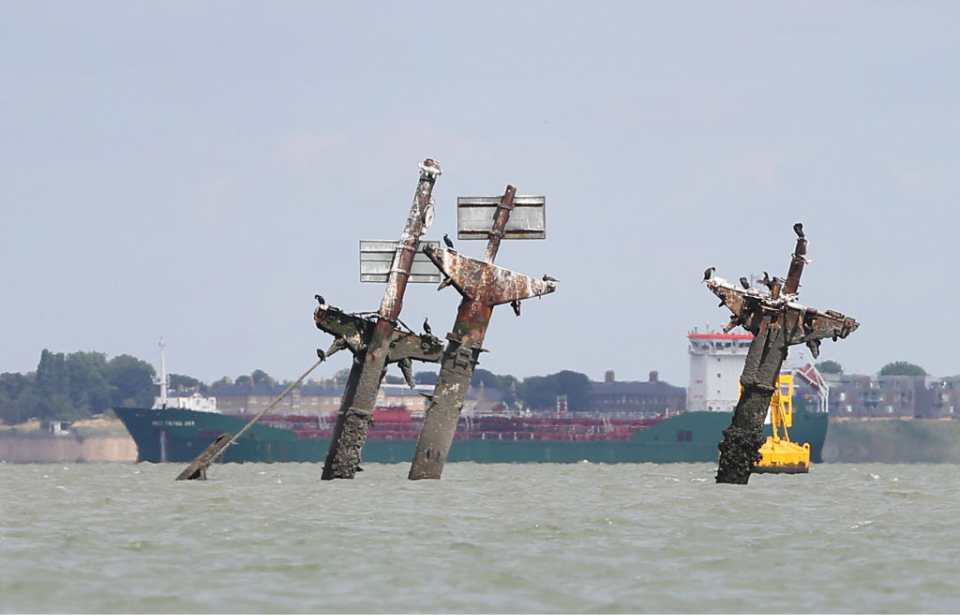During the summer of 1944, the SS Richard Montgomery left port in Philadelphia for the United Kingdom. Carrying thousands of tons of munitions, the trip was intended to be the liberty ship’s final voyage – and it was. That August, she anchored in the Great Nore Anchorage and began to drift, hitting a sandbank and suffering damage during low tide. The impact caused a shipwreck that remains a danger to those who reside along the shoreline.
The short service life of the SS Richard Montgomery

The SS Richard Montgomery was an American liberty cargo ship constructed in the final years of the Second World War. Laid down in March 1943 under a Maritime Commission (MARCOM) contract, she was named for Maj. Gen. Richard Montgomery, an Irishman who served in the Continental Army during the Revolutionary War. She launched in June of that year as the seventh liberty ship built by St. Johns River Shipbuilding Company in Jacksonville, Florida.
In August 1944, Richard Montgomery left Hog Island, Philadelphia for what was intended to be a convoy mission to Cherbourg, France, which had been liberated by the Allies during the Battle of Normandy. The vessel anchored at the Thames Estuary while awaiting the convoy’s creation, falling under the authority of the Thames naval control. She was ordered to anchor in the Great Nore Anchorage, and on August 22, 1944 ran aground along the Kent coastline.
The initial salvage effort
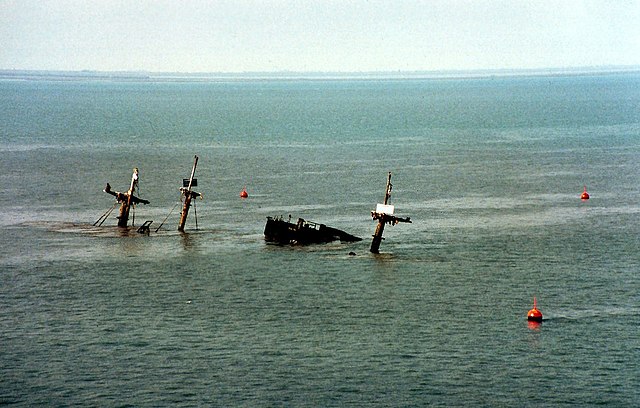
The effort to recover the SS Richard Montgomery‘s over 6,100 tons of munitions began on August 23, 1944. The vessel grounded amidships, resulting in her weak spot, the back, breaking. During the salvage effort, her hull cracked open, causing several cargo holds toward the bow to flood.
Using Richard Montgomery‘s own cargo handling equipment, crews removed approximately half of the munitions. While reports vary as to what was emptied, it’s said the two stern holds were likely cleared. An investigation by the Southend Chamber of Trade concluded that all of the fused bombs had also been removed, but this finding is considered to be inconclusive.
Efforts to unload the ship ended on September 25, 1944, following the wreckage becoming flooded.
The British government jumps into action
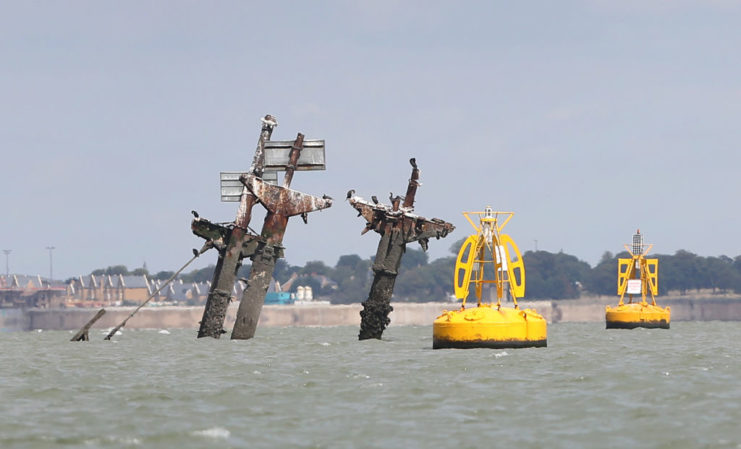
Presently, the SS Richard Montgomery contains approximately 1,400 tons of munitions: 2,000 cases of fragmentation cluster bombs and 208 tons of TNT-containing explosives. The site is monitored 24/7 by the Maritime and Coastguard Agency and subject to a 500-meter exclusion zone.
The area was made a prohibited site under the 1973 Protection of Wrecks Act, due to the danger of disruption, with Medway Ports given the responsibility of marking and guarding the wreckage on behalf of the Maritime and Coastguard Agency. According to a 2000 government study, there are three main risks associated with the wreck: a vessel colliding with it; the ship breaking apart due to deterioration; and the wreck being significantly moved.
A report by the Maritime and Coastguard Agency concluded holes had formed that could allow the explosives held within to escape. This corroborated the government report, which said both the wreck and the seabed’s topography showed minor changes.
Surveys conducted in 2017 and ’18 show Richard Montgomery to be in stable condition, but with accelerated levels of deterioration. Another study using multi-beam sonar and lasers heightened concerns that a chain reaction would occur if the detonators became unstable, resulting in the ignition of the entire load of munitions.
The risk factor surrounding the SS Richard Montgomery is debated
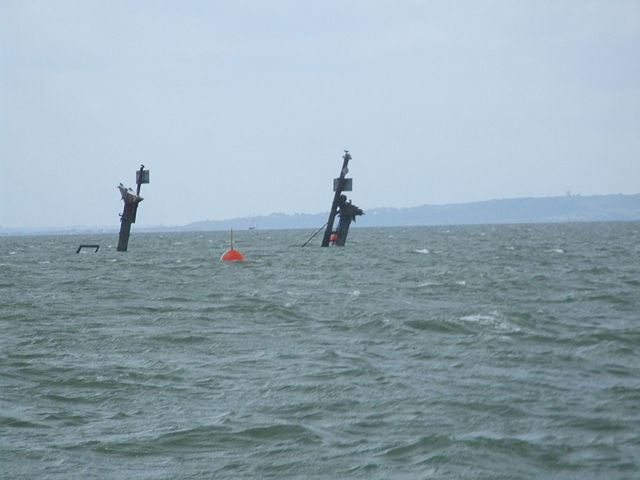
Opinions are divided regarding the explosive risk of the SS Richard Montgomery. Labour peer Lord Harris argues the cargo is “deteriorating together in an unstable environment, unguarded and unprotected,” while Conservative frontbencher Baroness Barran counters that the fuses have likely become so degraded that the possibility of an explosion is remote.
While Barran’s theory was reinforced by members of the Maritime and Coastguard Agency, scientists found the opposite to be true, explaining the TNT itself is not inert and could explode if detonated. This conclusion mirrors those of the government report and a 1997 survey review, which found the TNT has likely experienced limited property change, as it’s encased in metal.
Many believe the wreck should be left as is to keep the likelihood of an explosion low, arguing the risk only grows when attempts are made to remove the cargo. However, a survey conducted by the Department of Transport found the ship’s masts were at risk of breaking off and triggering an explosion. According to Ministry of Defence documents obtained by The Telegraph, this could cause a “worst-case scenario” of civilian deaths and damage to nearby oil and gas facilities.
According to experts, if Richard Montgomery were to explode, the ship would create a tsunami wave of between 4 and 16 feet in height. Its impact would lead to flooding in London. A 2004 report from New Scientist stated the explosion itself would be one of the largest ever non-nuclear blasts, with a force so strong it would damage buildings and blow out windows.
Efforts to make the SS Richard Montgomery ‘safe’
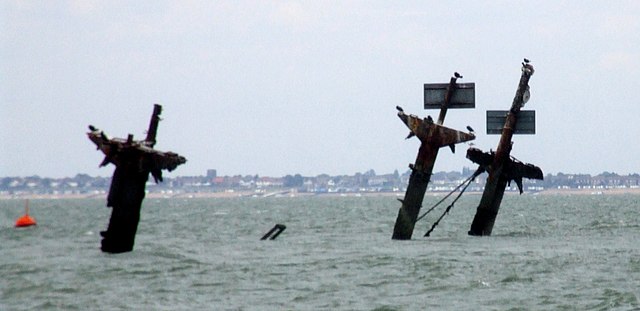
Should the SS Richard Montgomery be removed, it’s stated an area of around 25 miles would need to be evacuated for months at a time. Those advocating the wreck be left alone believe it will gradually degrade over time, meaning the cargo will get wet and become neutralized.
More from us: Georgios Averof: The Greek Armored Cruiser With An Impressive Service History
Toward the end of 2021, a survey was conducted to check for spilled explosives. The Ministry of Defence subsequently tasked bomb disposal experts with the British Royal Navy and 29 Explosive Ordnance Disposal Group with removing the ship’s masts. While work was initially slated to begin in June 2022, it was delayed until 2023, following the Department of Transport stating divers needed to carry out further checks of the wreckage.
